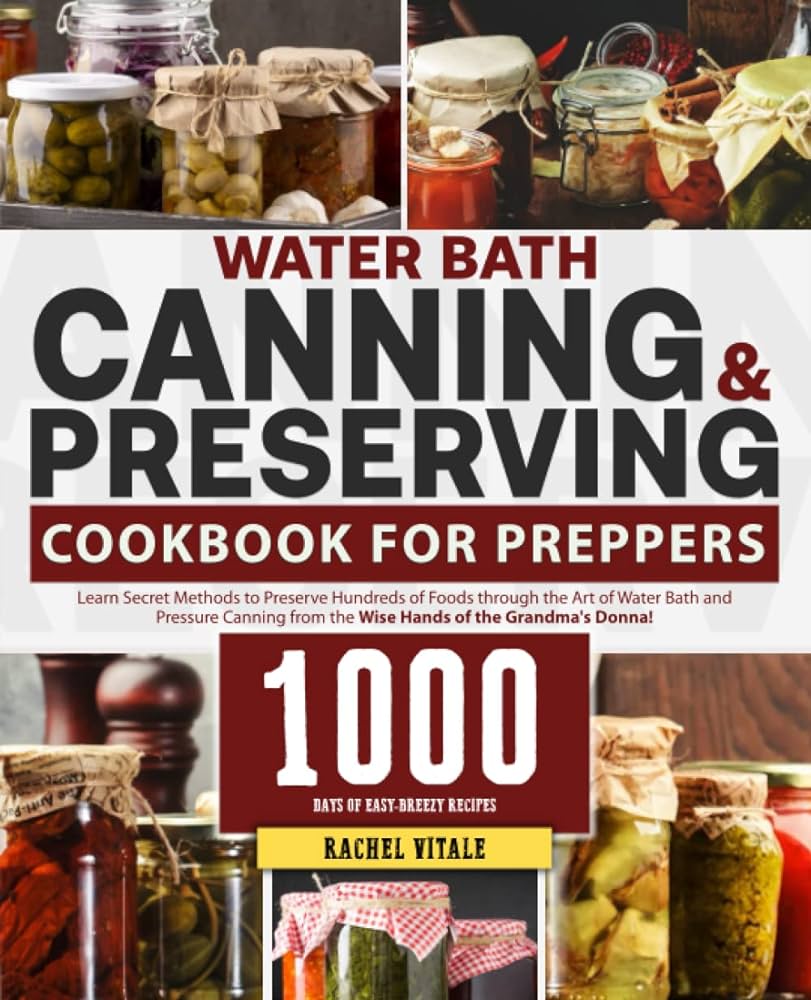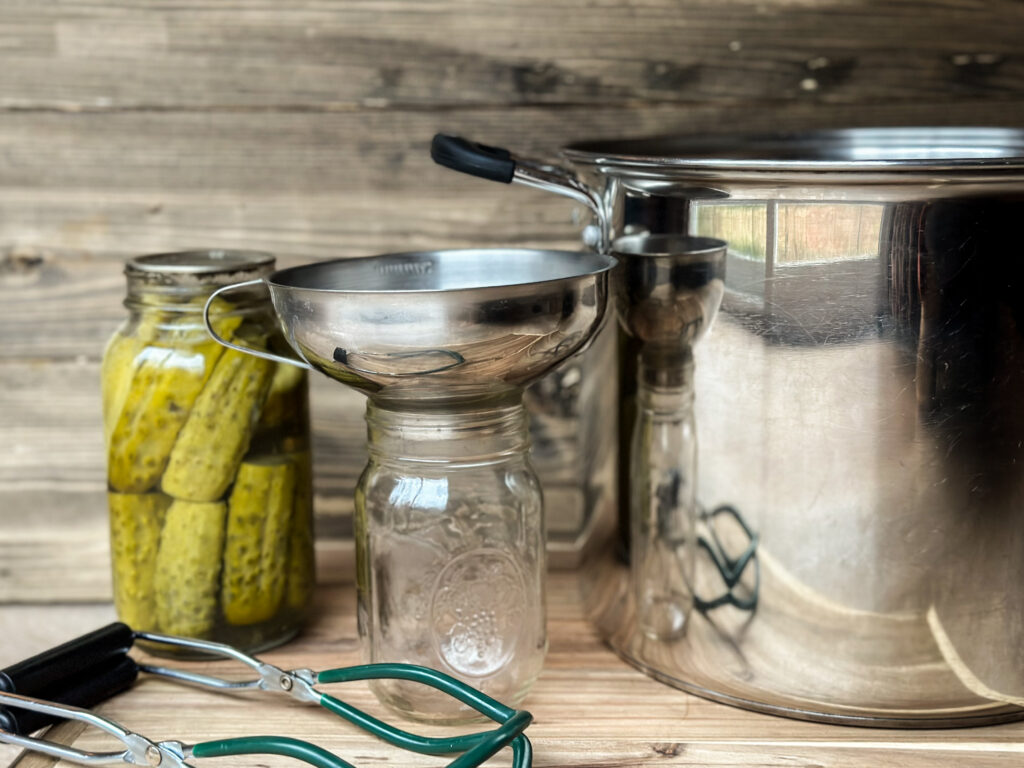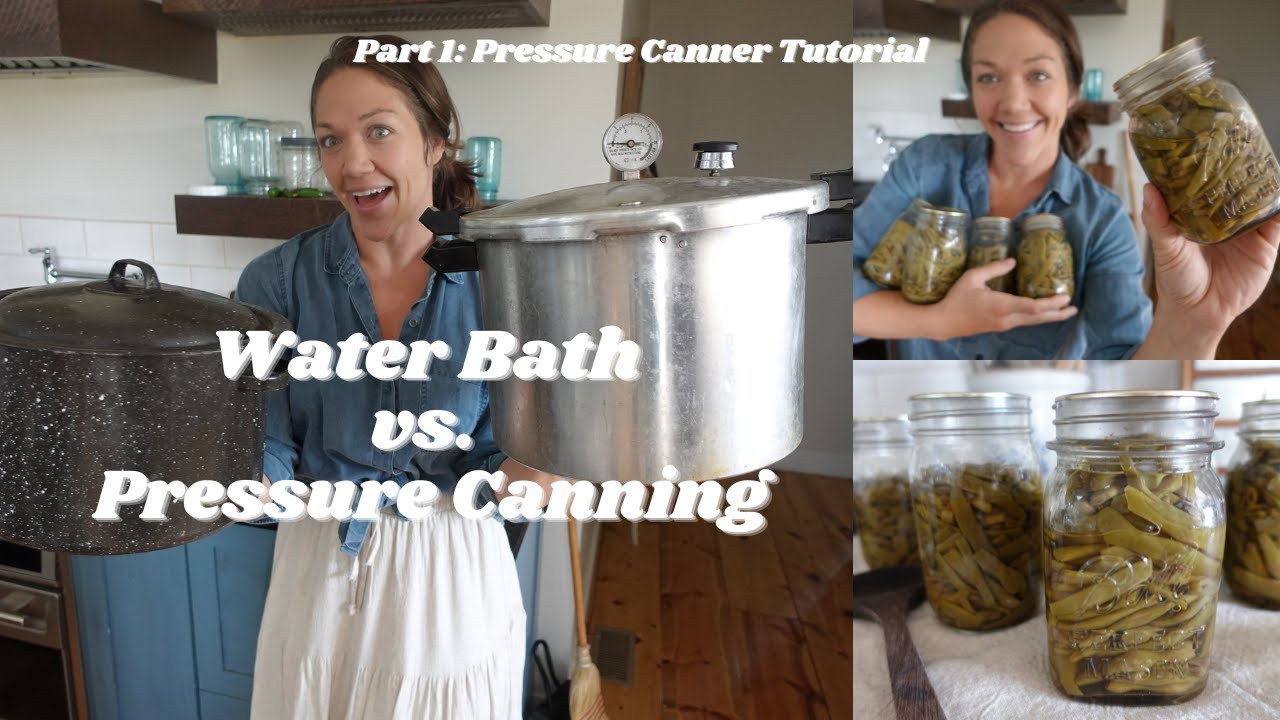Introduction

Introduction is a crucial part of any piece of writing as it sets the tone and provides an overview of what the reader can expect. It serves as a hook to capture the reader's attention and creates a roadmap for the rest of the content. When crafting an introduction, it is important to be concise and engaging, grabbing the reader's interest from the very beginning. By clearly stating the topic and purpose of the article, the introduction helps to guide the reader through the subsequent sections of the content. So, let's dive into the comparison between water bath canning and pressure canning.
Overview of Water Bath Canning and Pressure Canning

Water bath canning and pressure canning are two popular methods for preserving food. Water bath canning involves submerging filled jars in boiling water to create a seal, while pressure canning uses high pressure to achieve the necessary temperatures for safely preserving low-acid foods. The choice between the two methods depends on the type of food being preserved and its acidity level. In the next sections, we will explore the processes, benefits, and key differences between water bath canning and pressure canning, as well as safety considerations and tips for successful canning.
Water Bath Canning

Water Bath Canning
To begin water bath canning, the filled jars should be submerged in boiling water and heated for a specified period of time. This process creates a seal that helps preserve the food. Steps include preparing the jars and lids, preheating the water bath canner, filling and sealing the jars, and processing them in the boiling water. Water bath canning is ideal for high acid foods, such as fruits, tomatoes, and pickles. It is a relatively simple method that does not require special equipment, making it accessible for beginners.
Water Bath Canning Method and Process

Water bath canning is a method used to preserve high acid foods such as fruits, tomatoes, and pickles. The process involves submerging filled jars in boiling water and heating them for a specific period of time. The heat creates a seal that helps to preserve the food. The steps for water bath canning include preparing the jars and lids, preheating the water bath canner, filling and sealing the jars, and processing them in the boiling water. It is a relatively simple method that does not require specialized equipment, making it accessible for beginners.
Benefits of Water Bath Canning

Water bath canning offers several benefits.
- It is a simple and accessible method, suitable for beginners.
- It does not require specialized equipment, making it cost-effective.
- The high heat during processing destroys microorganisms, ensuring the safety and long shelf life of the preserved food.
- It helps retain the flavor, texture, and nutritional value of the food.
- Water bath canning is versatile and can be used for a variety of high acid foods like fruits, tomatoes, and pickles.
Pressure Canning

Pressure canning is a method used to safely preserve low acid foods. Here are the steps to pressure canning:
- Prepare the food by washing, peeling, and cutting it into appropriate sizes.
- Fill jars with the prepared food, leaving the recommended headspace.
- Place the lids and screw on the bands until fingertip tight.
- Load the jars into the pressure canner, following the manufacturer's instructions.
- Process the jars at the recommended pressure and time for the specific food.
- Allow the canner to cool naturally and wait for the pressure to drop to zero.
- Carefully remove the jars and let them cool undisturbed.
Remember to always consult a trusted canning resource for specific instructions and safety guidelines.
Pressure Canning Method and Process

To pressure can, begin by preparing the food and filling the jars. Then, load the jars into the pressure canner and process them at the recommended pressure and time. Allow the canner to cool naturally and remove the jars once the pressure has dropped to zero. Let the jars cool undisturbed. Remember to consult trusted canning resources for specific instructions and safety guidelines.
Advantages of Pressure Canning

One of the key advantages of pressure canning is its ability to safely preserve low-acid foods, such as vegetables, meats, and seafood. The high temperature and pressure created inside the canner kill harmful bacteria, ensuring the food stays safe for long-term storage. Additionally, pressure canning allows for shorter processing times compared to water bath canning, saving both time and energy. It also helps retain the nutritional value, color, and texture of the preserved food. These benefits make pressure canning an ideal method for preserving a wide range of foods.
Key Differences

Key Differences
When it comes to water bath canning and pressure canning, there are several key differences to consider.
- Heating Method: Water bath canning uses boiling water to heat the jars, while pressure canning uses steam created by high pressure.
- Processing Time: Pressure canning requires longer processing times compared to water bath canning.
- Suitable Foods: Water bath canning is suitable for high-acid foods like fruits, jams, and pickles, while pressure canning is necessary for low-acid foods like vegetables, meats, and seafood.
- Equipment: Water bath canning requires a large pot with a rack, while pressure canning requires a specialized pressure canner with a pressure gauge.
Each method has its own advantages and limitations, so it's important to choose the method that best suits your preservation needs.
Distinguishing Factors Between Water Bath Canning and Pressure Canning

Water bath canning and pressure canning have distinguishing factors that set them apart. One key difference is the heating method: water bath canning uses boiling water, while pressure canning uses steam under high pressure. Another important factor is the processing time, with pressure canning requiring longer processing times. The type of foods suited for each method also differs, with water bath canning suitable for high-acid foods and pressure canning necessary for low-acid foods. Additionally, the equipment required for each method differs, with water bath canning needing a large pot and pressure canning requiring a specialized pressure canner with a pressure gauge.
Recommended Foods for Each Method

When it comes to water bath canning, recommended high-acid foods include jams, jellies, chutneys, preserves, fruits, sauces, salsa, and pickled items in vinegar brine. On the other hand, low-acid foods like potatoes, carrots, green beans, corn, bone broth, dairy, and meat are best suited for pressure canning. It's important to follow these recommendations to ensure the safety and preservation of your canned foods.
Safety Considerations

When it comes to canning, safety should always be a top priority. Follow these safety precautions for both water bath canning and pressure canning methods:
- Ensure that all equipment, including jars and lids, is thoroughly cleaned and sterilized before use.
- Use proper canning techniques such as hot water baths and proper sealing to prevent the growth of bacteria.
- Follow recommended processing times and temperatures for each type of food to ensure that it is properly preserved.
- Store canned goods in a cool, dark place to maintain their quality and safety.
By following these safety considerations, you can enjoy the fruits of your canning labor with peace of mind.
Safety Precautions for Water Bath Canning and Pressure Canning

To ensure safe canning practices, follow these key safety precautions for both water bath canning and pressure canning methods:
- Thoroughly clean and sterilize all canning equipment, including jars and lids.
- Use proper canning techniques such as hot water baths and proper sealing to prevent bacterial growth.
- Adhere to recommended processing times and temperatures for each type of food to ensure proper preservation.
- Store canned goods in a cool, dark place to maintain quality and safety.
By following these safety considerations, you can enjoy the fruits of your canning labor with peace of mind.
Proper Equipment and Sterilization Techniques

When it comes to canning, using proper equipment and sterilization techniques is crucial to ensure food safety. Here are some key steps to follow:
- Clean all canning equipment thoroughly before use.
- Sterilize jars and lids by boiling them or using a dishwasher.
- Use a canning pot with a rack to hold the jars and ensure they are completely covered with water during processing.
- Follow the recommended processing times and temperatures for each type of food.
- After canning, check the seals on the jars to make sure they are properly sealed.
By following these steps, you can ensure that your canned foods are safe and can be enjoyed for months to come.
Conclusion

When it comes to choosing between water bath canning and pressure canning, it's important to consider the acidity level of the food you are canning. Water bath canning is best for high-acid foods like tomatoes, fruits, pickles, jams, and jellies, while pressure canning is ideal for low-acid foods like vegetables, meats, poultry, and seafood. By following proper equipment and sterilization techniques and taking necessary safety precautions, you can ensure the safety and quality of your canned foods. Remember to check the seals on the jars after canning to ensure they are properly sealed. Happy canning!
Choosing the Right Canning Method for Your Preservation Needs

Choosing the right canning method for your preservation needs is crucial to maintain the safety and quality of your canned foods. Consider the acidity level of the food you are canning – high acid foods like tomatoes and fruits are best preserved using the water bath canning method, while low acid foods like vegetables and meats require pressure canning. Remember to follow proper equipment and sterilization techniques and take necessary safety precautions. Check the seals on the jars after canning to ensure they are properly sealed.
Tips for Successful Canning

To ensure successful canning, follow these tips:
1. Use reliable recipes and follow them precisely.
2. Properly prepare and sterilize your jars and lids.
3. Use fresh, high-quality ingredients.
4. Leave proper headspace in your jars to allow for expansion.
5. Remove air bubbles by gently tapping the jars.
6. Wipe the jar rims clean before placing the lids on.
7. Process jars for the recommended time and at the correct pressure or temperature.
8. Allow jars to cool undisturbed before checking the seals.
9. Store canned goods in a cool, dark place.
DK FAQ MARK
FAQ about Preserving Delights: Water Bath Canning vs Pressure Canning
Q: What is water bath canning?
A: Water bath canning is a method of preserving food in jars by submerging them in boiling water for a specified amount of time to kill bacteria and create a seal.
Q: What is pressure canning?
A: Pressure canning is a method of preserving food in jars by using high pressure and temperature to destroy bacteria that a water bath canner cannot eliminate.
Q: What types of foods are suitable for water bath canning?
A: Acidic foods like fruits, pickles, jams, and jellies are ideal for water bath canning due to their high acidity levels that inhibit bacterial growth.
Q: What types of foods are suitable for pressure canning?
A: Low-acid foods like vegetables, meats, poultry, and stews are best preserved through pressure canning to ensure the destruction of harmful bacteria like Clostridium botulinum.
Q: Is one method of canning safer than the other?
A: Pressure canning is considered safer than water bath canning for low-acid foods as it can achieve higher temperatures needed to eliminate the risk of botulism.
Q: Do I need to invest in special equipment for both types of canning?
A: Yes, for water bath canning, you will need a large stockpot with a rack, while pressure canning requires a pressure canner specifically designed for canning purposes.

The Finer Diner has a rich history deeply rooted in the Mt. Oliver and Hilltop community. Our journey began with a simple yet ambitious vision – to create a welcoming space where friends and families could come together to enjoy delicious, comforting meals in a classic diner-style setting. Since our establishment, we have been dedicated to serving food, creating lasting memories, and fostering a sense of belonging within our community. Our commitment to quality, authenticity, and exceptional service has been the cornerstone of our success.